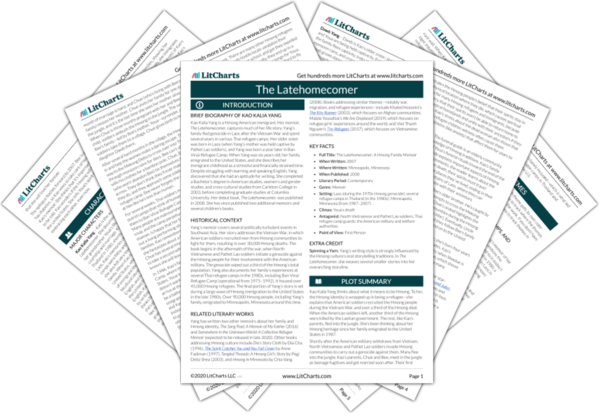Next
Summary
The Latehomecomer Study Guide |
Next
Summary
|
Welcome to the LitCharts study guide on Kao Kalia Yang's The Latehomecomer. Created by the original team behind SparkNotes, LitCharts are the world's best literature guides.

Spinning a Yarn. Yang’s writing style is strongly influenced by the Hmong culture’s oral storytelling traditions. In The Latehomecomer, she weaves several smaller stories into her overarching storyline.